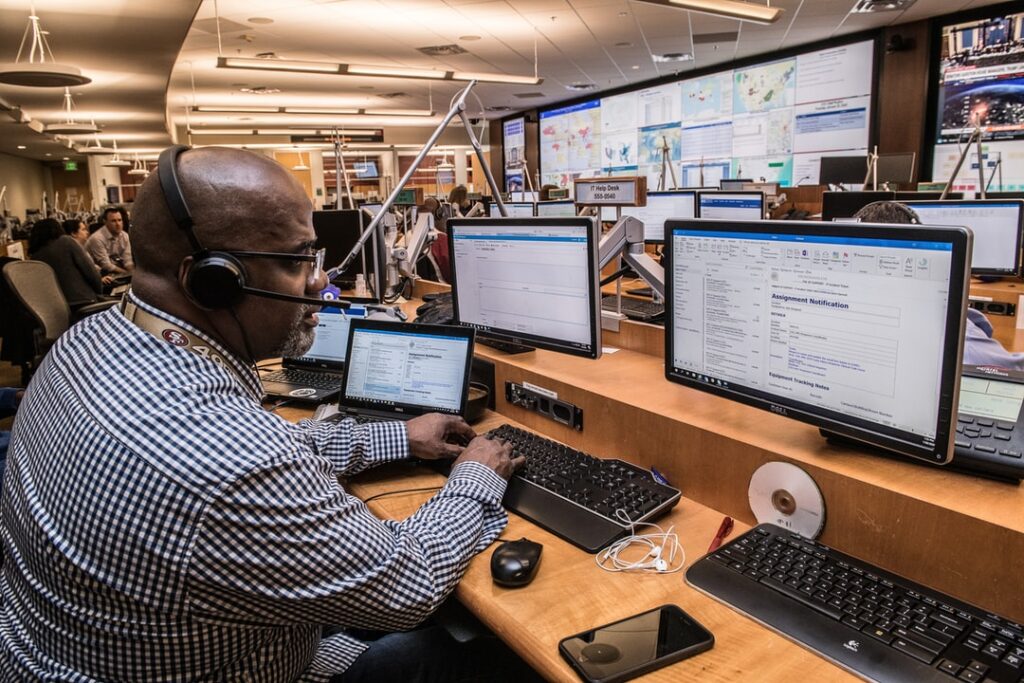By Kay Rindels
At the 2022 GAINS Summit, many supply chain executives and practitioners shared their current challenges and where they were investing in the future. Our customer panel included distribution and manufacturing representatives in the semiconductor, luxury goods, and signage markets. Representatives from these businesses shared their experiences and advice with the GAINS community.
The panelists included:
- Matt Luther, Director of Supply Chain, Grimco Inc.
- Ueli Stricker, Director of Global Supply Chain, Swissbit AG
Here are a few excerpts from their insightful remarks:
What does supply chain success look like in your business, and how does your senior leadership measure success?
Stricker: Measuring success in the supply chain is difficult, but we are reporting to our board how well we are simultaneously meeting the customer’s requested delivery date and inventory level. Accounting for both sides provides a balanced view.
Luther: From an executive level, we’re looking at cash, turns, and inventory. We are very focused on our inventory health, what that looks like on a monthly basis compared to our sales goal, and what direction we are headed. We also look at our customer experience. We’re looking at our web store data to track abandoned carts and where they are left. Is that an opportunity to improve our order fulfillment by potentially adding additional inventory? And the metric that has started to creep up for us over the last nine months is freight costs.
How and where are you automating for better accuracy? Has this impacted employee engagement?
Luther: We have pushed automation, and in turn, it’s helped our employee engagement by freeing them up to do different, more fulfilling tasks. They are working more with our sales team to try and understand the challenges they’re dealing with so that we can go back to GAINS and adjust the forecast. Some team members are now working with vendors to understand their challenges and change our system and expectations. Automation has been huge for us.
Stricker: We are fully automating as much as possible with GAINS, since GAINS is covering 70% of our SCM functionalities. We are using sales forecasts as an accurate indicator, but since sales are sometimes enthusiastic, we compare it to GAINS statistical forecast and decide about our trusted demand plan. Swissbit had the opportunity to grow because our sales forecasts were more accurate, even in changing times. Thanks to that we could drive growth. In the past three years we have leveraged GAINS a lot. For us, the biggest advantage out of GAINS is to automate the small things than we can focus on the big levers driving our business success. This has brought a significant advantage to Swissbit, enabling additional growth because we had been ready for growth.
How have you managed the volatility you’ve faced in the last few years?
Stricker: We faced it because we are in the semiconductor business. GAINS gave us a better view of our future demands. Based on that, we could make commitments through the supply chain to secure our materials ahead of others. Thanks to Gains and our Sales Forecast we have foreseeable demand. We could see what is running out of stock, even six months in advance, and could change things. We could bring up alternatives and engage new suppliers. That’s a significant advantage in the market. There is always some short-term volatility, but we spend much less effort in micromanagement.
Luther: We’ve experienced volatility in two different waves. With COVID, the world shut down, but one thing that did come out of it was a need for signage. Staying six feet apart meant new floor graphics, for example. Grimco wasn’t not printing the signs, but we are supplying all of the print houses with the material. We saw a dramatic shift from our historical product mix. Over the last 20 years, the core items for Grimco became irrelevant overnight. Items that were on the tail, so to speak, ended up becoming core. We had to shift relatively quickly regarding how we managed our inventory. We utilized GAINS to understand how we needed to change our forecast, the best way to do this, and how we could do it quickly.
On the flip side, last year’s Texas freeze reeked chaos in our industry because we use a lot of byproducts from the oil and gas industry. Fortune 50 companies that we buy from couldn’t supply us with anything. We went from having a three-day lead time on some of those items to a 50, 60, and even 80-day lead time. The industry was trying to grab everything it possibly could. And that’s the path we have used to move forward through the pandemic and recent volatility. Unfortunately, we are still in a supply crunch to this day. Inventory has skyrocketed for us. If you look at where we were pre-pandemic, we aren’t up 20 times, but we are up probably three times. Part of that is because we ended up cutting off the tail. We made items irrelevant to us and told our sales team that we would stop stocking them. And unfortunately, if a customer wants to buy them, that’s fine. They’re just going to have to wait for them to come in. We’re balancing through our inventory position as we speak.
What is your priority for next year, and how are you changing your business model?
Luther: We are focused on last-mile delivery and customer experience. We are going to add more distribution hubs and shrink our spoke branches. So rather than pushing inventory out to as many branches as possible, we will centralize it and leverage our transportation partners to try and reduce our LTL, FTL, and UPS spending. We will push that into our last-mile delivery with an expansive carrier network. Our goal is to deliver 97 and 98% of all items tomorrow.
Stricker: We are in the B2B and semiconductor market. Our biggest challenge at the moment is geopolitical. Semiconductors are coming from Taiwan or China, and we do not see what will happen there in the next five years. So, our current focus is on vertical supply chain integration, including increasing our budgets for next year to support more upstream and downstream information exchange.
What would your focus be if you had an unlimited budget next year and could do whatever you wanted in your supply chain next year?
Luther: I think it would be focused on what we’re already doing for us. It would be around opening some additional DCs but injecting more technology. We want to bring more technology around visibility on the transportation side of our business. We want to integrate this visibility with the other forms of technology we already have. This would include our CRM and web store. We would integrate this data source into GAINS to better understand customer expectations.
Stricker: Something I think will never end is the integration of systems. We are working on better supplier integration, gaining more customers signals, and automating more. Integration is something we work on now and will in the future.
The other thing we must work on is having an anti-cyclic sourcing behavior. Now, we see a decrease in demand. But we must prepare for when times change again in the semiconductor market. It has been a period of strategic allocation, deciding which customer and channel to deliver to. These actions drove tighter relationships with suppliers and customers. So, we will focus how to automate these allocation processes in the next year.
GAINS would like to thank these customers for sharing their insights and plans. If you would like to see how GAINS can help you achieve your supply chain success with automation or inventory management, contact us today.


